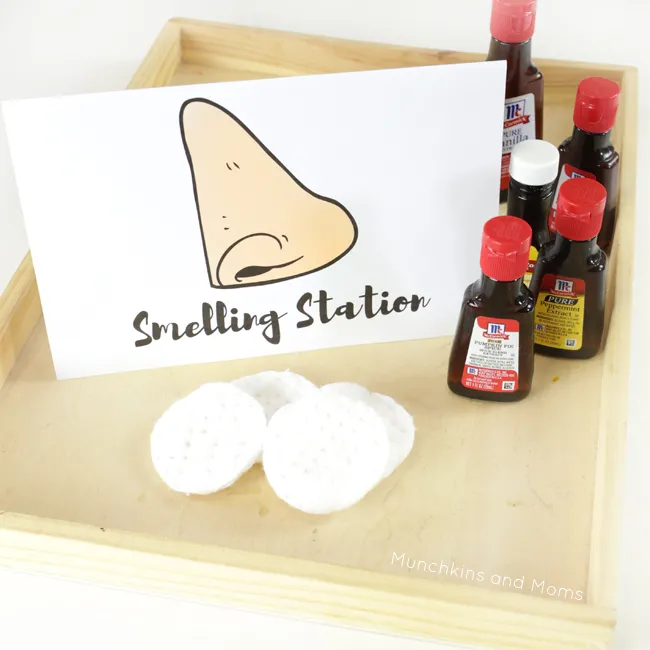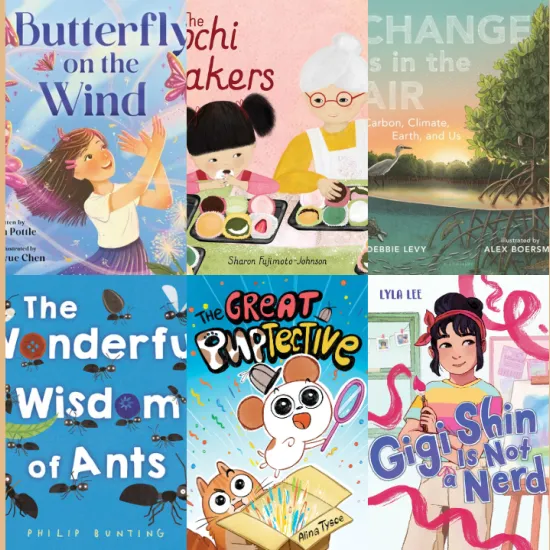- Shannon G.
- Tuesday, November 17, 2020
From an infant, we use our senses to explore the world around us. Now, help your child do more by honing in on all their senses.
This South Carolina standard states that children will be able to describe how humans use their senses to learn about the environment. Our senses are used to collect and analyze information. There are five senses, and each one has a specific part of the body (a sensory organ) responsible for it. Singing "Head, Shoulders, Knees and Toes" is a simple yet fun way to introduce sensory body parts. Families can also take a sensory stroll. While out and about ask children to describe what they see, hear, touch or smell.
Here are some interesting facts about the senses:
- The eyes are the sensory organs that see. They notice an object's shape, color, size or movement.
- The nose is the sensory organ that smells odors. Did you know that the nose plays a big part in how we taste food too?
- The ears are the sensory organs that collect sound. The outside of the ear collects the sound, while the inside of the ear helps with hearing.
- The tongue is the sensory organ responsible for taste. The tongue has over 100 small taste buds that tell if something is sweet, salty, sour or bitter.
- Skin is the sensory organ responsible for touch. Touching can tell the shape, texture and hardness of an object. Skin covers and protects everything inside the body. It also helps keep the body at the right temperature.
How will I know if my child has met this kindergarten standard?
- My child can identify the five senses and sensory organ that is associated with each sense.
- Ex: "This sweater makes my skin feel itchy."
- My child compares objects using different senses.
- Ex: "It looks like sugar but it doesn't taste sweet."
- My child investigates new or unfamiliar environments with their senses.
- Ex: "I don't like this place. It smells weird in here."
- My child asks questions about what they observe with their senses.
- Ex: "Where is that loud noise coming from?"
Activities
Children love learning through exploration. Keep your child engaged while learning with these activities:
Recipes for Play on Hoopla, also has plenty of activities and ideas that inspire exploration.
Sarah Gough from Richland Library's Programs & Partnerships Department walks us through some simple activities with sensory dough that promote learning and play. Read her blog on Sensory Dough Learning Activities here.

Create a station for each sense. A simple container with everyday objects works fine. Children can spend time playing with their senses and add more items they find.
https://playteachrepeat.com/guess-the-scent/
A Note on Diversity
It is important to know that not everyone has the same level of senses. Some children may experience things strongly or not even at all. They may be overly sensitive to noise, lighting, smells, and new movement. Or they may feel their senses are muted and need extra support. Children with sensory challenges have what is called sensory processing disorder (SPD). Families should be mindful of the effects of SPD and adjust activity levels as needed. To learn more about sensory processing disorder, find resources from the STAR Institute or the National Center for Learning Disabilities.
Multimedia
Start your lesson with the following resources: Generation Genius includes a full lesson plan with vocabulary, discussion questions and assessments. Smile and Learn uses stories, songs and games in YouTube videos for an educational tool on a variety of topics.
George and his friend Bill use their five senses—smelling, touching, seeing, hearing, and tasting—to figure out a way to keep deer from eating the garden flowers in this video excerpt from Curious George: Oh Deer. In the accompanying PBS lesson plan, children use their five senses to record information about and identify a variety of mystery items.
Learn about the Five Senses with Dr. Binocs. Dr. Binocs has a bag of five senses. Do you know what are the five senses of a human being? Have you ever wondered how important are your eyes, ears, nose, tongue and skin? Join Dr. Binocs as he tells you more about the five senses.
Ready for more?
Visit the SC Education Standards page
Books to Read
The titles below will help you and your child discuss the five senses. Want us to pull books for you? Contact us at 803-799-9084 and request to have books sent to your nearest Richland Library location.

My Five Senses


Cold, Crunchy, Colorful

The Five Senses

See, Hear, Smell, Taste, and Touch

Sensory Parenting - the Elementary Years. School Years Are Easier when Your Child's Senses Are Happy!

I Hear a Pickle


Mitzi Tulane, Preschool Detective, in What's That Smell?

My Five Senses


Hearing

Seeing

Smelling

Tasting

Touching

Five for a Little One



